Much of the information in this history was written by Lloyd W. Brown Jr., in his 1969 thesis on the History of Journalism: University of South Carolina, 1923-1969. Pat McNeely updated it and used it with his permission in her book, The History of South Carolina’s Newspapers and Press Association, co-authored by Michael S. Smith. Recent updates to the history were made by long-time faculty member Randy Covington.
The first seed for a journalism school at the University of South Carolina was planted when August Kohn, a Carolina graduate with a keen interest in the newspaper business, was elected to the Board of Trustees in 1900.
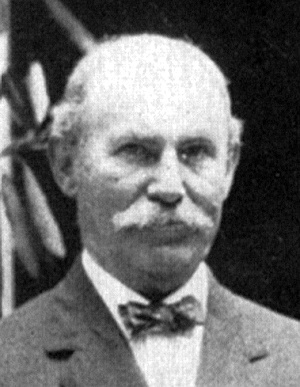
Kohn, a one-time Columbia correspondent for The (Charleston) News and Courier, began urging his colleagues to set up a department of journalism.
Kohn developed a life-long interest in journalism while he was editor in 1888 of South Carolina College’s first on-campus journalistic publication, The Carolinian. He began contributing college news to N. G. Gonzales, Columbia bureau chief for The News and Courier, and when Gonzales fell ill with typhoid fever in December 1888, Kohn worked regularly in the bureau. After Kohn’s graduation in 1889, he became a reporter for the paper. He moved to the Columbia bureau in 1892.
Kohn served as president of the S. C. Press Association before leaving The News and Courier to develop various business interests in Columbia, including banking, insurance and real estate. He was elected to the University of South Carolina Board of Trustees at a young age, but he never forgot his journalism roots.
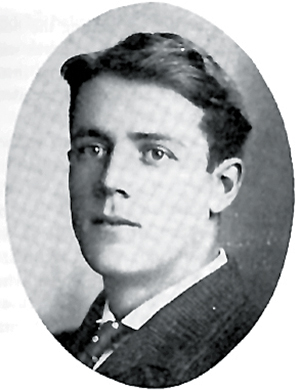
Proposals for a journalism school did not catch fire, but by 1904-05, the college catalog offered one course, “English Essay classes by distinguished journalists and others.” With Kohn’s blessing and the paternal interest of The State newspaper, USC’s first student newspaper, The Gamecock, was founded Jan. 30, 1908. The first editor was Robert Elliot Gonzales, whose father and uncles owned The State. The founding of the Gamecock increased interest in journalism on campus, but plans for a separate department stalled.
About 1910, Professor E.L. Green tried to establish a USC printing plant to lower the university’s printing costs and to provide part-time work for students. Trustees Kohn and David R. Coker personally underwrote the cost of the equipment with loans, hoping that it would spur more interest in journalism.
By 1913 and 1914, the young editors of The Gamecock were editorially calling for the establishment of a journalism school, but World War I intervened before a serious effort could be mounted. A plaintive wail in the Gamecock in 1917 years later reflected the lack of progress: “Somebody endow a school of journalism.”
In 1922, the university acquired a new president, William Davis Melton, a Carolina graduate and Columbia lawyer. Melton’s election stirred editorial opposition from several South Carolina editors, including the Yorkville Enquirer, the Saluda Standard and the Calhoun Times, whose editors saw Melton, Kohn and William Watts Ball, editor of The State, as part of a “Columbia ring” that controlled the state.
With Kohn’s support, Melton rekindled the idea of a USC journalism school, which quickly won the enthusiastic support of most of South Carolina’s newspapers and the hearty endorsement of the S.C. Press Association. On December 12, 1922, the USC Board of Trustees authorized the creation of a School of Journalism to be established in 1923. When the USC budget was approved by the legislature March 14, 1923, it included $3,000 for the salary of a dean for the new journalism school, but no other budget.
Melton reported to the USC Board of Trustees June 12, 1923, that the establishment of the new School of Journalism was finally possible. The board at first considered hiring Stanhope Sams, one of the editors of The State, as dean of the new school. Sams was asked to study journalism programs in the country and submit a proposed outline, which was printed in the 1923-24 catalog. Sams spoke at least eight languages and had traveled through the Far East on special assignments for the Department of Commerce. After being editor of The Japan Times of Tokyo and correspondent for several American newspapers, he joined The State’s editorial department in 1905 and won an honorary doctorate from Newberry College in 1906.
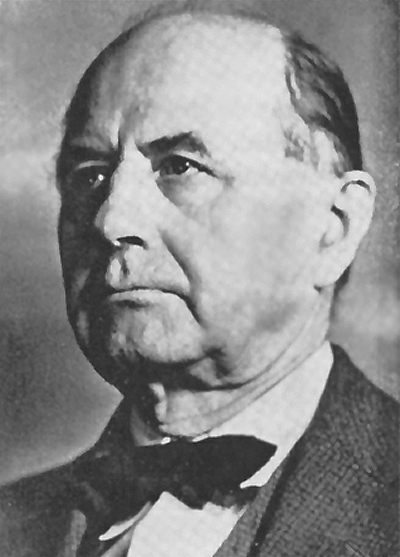
W.W. Ball
Instead of Sams, however, the USC board of trustees chose W.W. Ball, who took a pay cut from his $6,000 a year job at The State to become dean at $3,000 a year.
Ball, son of Beaufort Watts and Eliza Watts Ball of Laurens, was barely 18 years old when he was graduated from South Carolina College (USC) in 1886. He was admitted to the South Carolina Bar in 1890, but he opted for a journalism career instead of law. Ball was editor first of the Laurens Advertiser and then of the Columbia Journal. From his earliest days, he wanted to be a major player in the state’s politics, but success was a long time coming. The Columbia floundered, so Ball returned home and bought the Laurens Advertiser, where he joined the chorus of editors opposing the policies of Governor “Pitchfork” Ben Tillman. Ball subsequently edited The (Charleston) Evening Post and The State newspapers in South Carolina before becoming the first dean of the School of Journalism at USC.
The most vehement opposition to creation of the school came from the Saluda Standard, which accused The State of manipulating Ball’s appointment and rigging the establishment of the new school. “There is absolutely no need for a ‘school of journalism’ at the university and it was established solely because it would afford employment and a measure of honor to men dear to its sponsors....The ‘school of journalism’ accurately defined, is nothing more than a ruse of ‘the ring’s’ to extract more money from the state treasury. . . . The vast majority of the publishers in South Carolina cannot employ ‘journalists’ to edit their sheets... The majority of ‘journalists’ that the university turns out will have to go to other states for employment. ...Not over a baker’s dozen newspapers in South Carolina can afford a journalist and in several of these the ‘boss’ is the editor.”
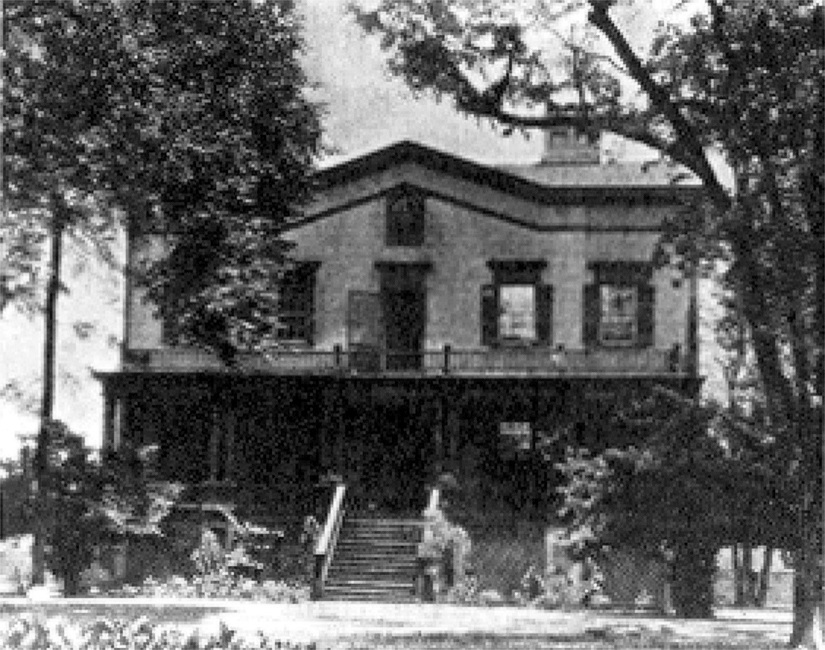
Built in 1806 for the USC president and razed in1938 to make way for the McKissick Library (now the McKissick Museum), was the first home of the school.
Ball resigned from The State June 12, 1923, to plan for the new school, which occupied four rooms on the third floor of a rickety old house on the Horseshoe near the site where McKissick Museum stands today.
Two rooms were classrooms, a third was for storage of newspapers, and the other small space was an office.
The house was originally constructed as the President’s House near McKissick Museum, but it was in such poor condition that Melton had refused to move into the old building.
Eight students registered for journalism classes in the fall of 1923. During the first year the School of Journalism listed 13 journalism courses ranging from Reporting and News Writing to Advertising and Trade Writing. All except one were taught by Ball.
After a few weeks on the job, Ball wrote his friend Philip H. Gadsden in Philadelphia: “...the students in the last two years will have other work besides mine, but they take my instruction in news writing and kindred subjects. .. if in two years I can lick a raw youth into shape so that in the first year of outside work, he will not be a burden to his city editor, I’ll do pretty well.”
On July 20, 1923 Ball wrote another friend T.H. Dreher in St. Matthews: “I shall have students who do not purpose to be newspaper workers but I shall try to teach them how to write a letter that will not set a copy-reader’s reserve magazine of profanity on fire.”
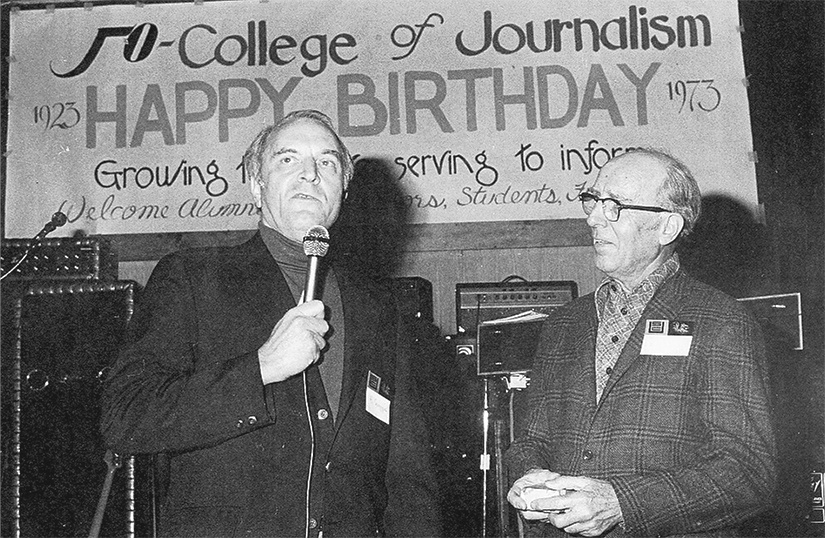
Dean Al Scroggins, left, reminisces with C.B. Williams, the first and only graduate of the Class of 1925.
Just two years after the journalism school was established, Charles Braxton Williams became the first graduate of the USC School of Journalism in the Class of 1925.
For $20 a week, Williams went to work at The (Greenwood) Index-Journal. The front page and wire copy were turned over to him on his second day on the job. “I didn’t think about it then, but if Mr. Ball hadn’t done a pretty damn good job with us at the University, I couldn’t have handled (it).” By the time Williams returned to USC in 1925 to earn a master’s degree, the university was offering one graduate-level journalism course, but students who wanted a master’s still had to concentrate in English.
Ball declined an invitation to run for governor in 1926, the same year he urged his friend Thomas R. Waring Sr. to buy the financially ailing Charleston News & Courier. Ball was satisfied with the growth of the college, which had 36 students by 1926. Ball was eager for a new challenge. When Arthur Manigault, who owned the Charleston Evening Post, bought The News and Courier in 1927, Ball replaced his cap and gown with a green-eye shade as editor of The News and Courier. He replaced Pulitzer Prize winning editor Robert Lathan, who became editor of the Asheville Citizen.
Williams, USC’s first journalism graduate, followed Ball to Charleston, where he became circulation director of both the Evening Post and The News and Courier and a director of the Packet Motor Express and the Post and Courier Foundation.
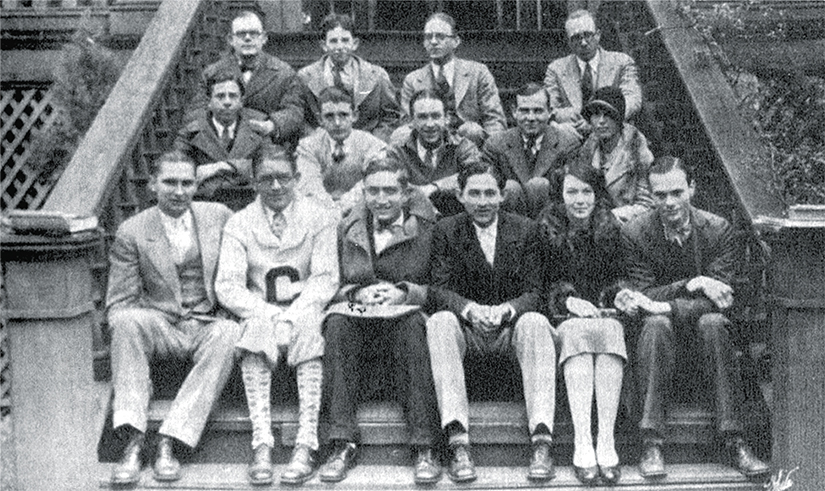
Some members of the journalism Class of 1927.
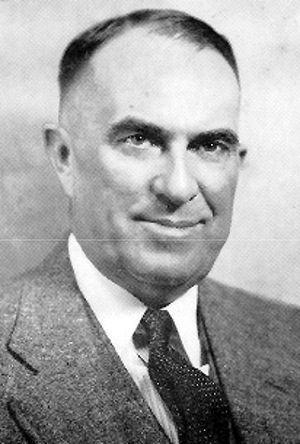
J. Rion McKissick
Ball’s successor as dean was J. Rion McKissick. Born in Union in 1884, McKissick was a 1905 graduate of South Carolina College who attended Harvard Law School. He was admitted to the South Carolina Bar in 1914, but like his predecessor as dean, he turned to a journalism career. McKissick became a reporter on the Union Progress, a semi-weekly. He soon was promoted to business manager of the paper (the forerunner of today’s Union Daily Times).
McKissick left the state briefly to work as a reporter, assistant editor and chief editorial writer of the Richmond Times-Dispatch. He came back home to take the editor’s job at The Greenville News before buying a partial interest in The Greenville Piedmont and becoming its editor in 1919.
McKissick assumed the dean’s post on June 8, 1927. He initiated a course that became a legend – “Vocabulary Building and Advanced Composition” – taught exclusively by Dr. Havilah Babcock until his death in 1964 and known to generations of Carolina graduates as “I Want A Word.”
The journalism school acquired typewriters that year, but each student had to pay a $5 fee to use them. McKissick started a campus news bureau. Selected juniors and seniors wrote stories about the university for academic credit, but the stories also were disseminated to the state’s daily and weekly newspapers.
McKissick’s classes were informal. A student later wrote that the dean sat behind a large desk piled high with papers and talked to his students quietly and with great friendliness through the smoke arising from his favorite White Owl tobacco in its cherry wood pipe. McKissick punctuated his lectures with anecdotes about South Carolina’s past. He typed his own exams and pasted the pages together in long streamers.
McKissick and his wife, Caroline, became surrogate parents for a generation of young journalists. They found a residence a block off campus and maintained an “open house” policy for students throughout their lives. Alumnus Frank Wardlaw once recalled looking through a large window of the couple’s home and seeing McKissick at his desk “reading or banging on his oversized typewriter with two fingers. We would always stop, and he would welcome us with warm geniality, pulling up comfortable chairs for us.... He treated us as intelligent adults, and was never in any sense patronizing.” The students always called McKissick “Colonel.”
Student enrollment topped 50 in 1927, and courses were added to accommodate the growth: feature writing, a news writing lab, copy editing, journalism history and law of the press. Eight students received bachelor’s degrees. Two years later, the school achieved national recognition when the New York State Education Department accepted its bachelor’s degree program.
The Gamecock reported in an April 8, 1930 article that the “percentage of staff members who are candidates for the degree given after a certain amount of pounding Dean McKissick’s typewriters is increasing.” The number of journalism students had risen to seventy-seven by the 1929-30 academic year.
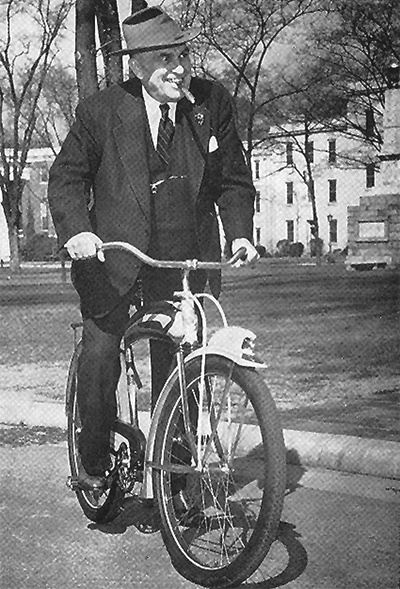
J. Rion McKissick, who had owned and edited the Greenville Piedmont, was dean from 1927 to 1935, when he became president of USC.
However, the financial troubles of the Great Depression struck the university in 1932. Salaries were reduced, and all non-essential activities were eliminated or reduced. Free tuition and special scholarships were abolished.
In The Gamecock of Nov. 24, 1933, students stridently complained about the journalism building, calling it an old “one hoss shay.” During the early Depression years, the journalism school still enjoyed modest growth in enrollment.
During those years, McKissick polished his own academic credentials. He studied for eight summers at the University of Wisconsin to earn a master’s degree in journalism. Not content with that, he began working on a Ph.D. in political science from Wisconsin. (The university didn’t offer a journalism doctorate then.)
On July 1, 1936, the USC Board of Trustees named McKissick president of the university, but he continued as dean of the School of Journalism.
In the late 1930s and early 1940s, the face of journalism on campus began to change. The English Department initiated a radio course, and the Physics Department began teaching photography.
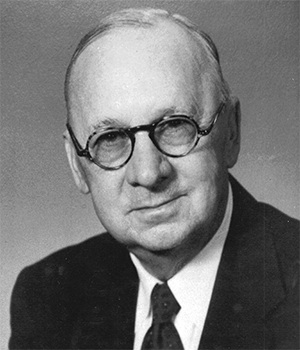
Samuel Capers DePass
Advertising was added to the curriculum in 1936, along with two new faculty: Professor Samuel Capers DePass, a native of Camden with a law degree from South Carolina College. DePass had been a reporter on newspapers in Utah, Minnesota and Chicago; He was joined by Instructor Floyd Dwight Rodgers, who had a journalism degree from South Carolina College and a master of science degree in journalism from Columbia University. Rodgers was paid $1,620. When he left in 1937 to accept a more lucrative offer from WIS radio, Frank H. Wardlaw replaced him on the faculty. In 1938, the School of Journalism was moved to the second floor of Legare.
McKissick kept the dual offices of president and dean of the journalism school until 1939, when DePass was appointed dean at no increase in salary. His salary was $3,134. Wardlaw was making $1,900 a year. The original journalism building was razed in 1938 to make way for the new McKissick Library (now McKissick Museum).
McKissick died in office in 1944 and became the only person buried on the campus. His tombstone, in front of the South Caroliniana Library on the University Horseshoe, bears the words, “I have kept the faith.”
The school moved around campus often. After Legare College, it was relegated to Maxcy’s basement. Students called those cramped, poorly lit quarters “the Mole Hole.” With the postwar boom of GI Bill students, the school moved again into a building that lumped together the registrar and schools of journalism, retailing and English Bible. “Journalism might be called the orphan school of the university,” the Gamecock editorialized.
The “orphan” continued to migrate around campus. In 1946, the school moved to what is now the McCutcheon House on the Horseshoe, and in 1948 to a war surplus building between Davis and Currell. After several years of failing health, DePass retired in 1950.
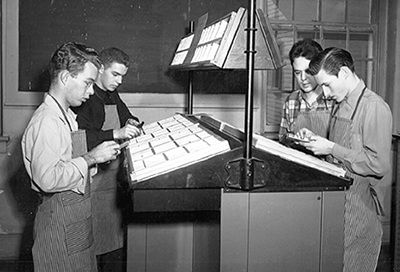
Students learned to set type during the early days of the USC School of Journalism.
After two prospective deans signed contracts and then immediately resigned, USC Director of Public Relations and former reporter Robert Joshua Cranford became acting dean just before the start of the 1950-51 school year. Cranford, a Duke University graduate, was a veteran of the Associated Press.
When students returned for classes, they found he had revamped the curriculum and moved the college into expanded quarters that occupied the entire center of Legare College, which was equipped with new typographical equipment and a darkroom.
Cranford saw as his mission to provide a “good, solid nuts and bolts curriculum for people who were going into the business.” He built on the basic courses that had been offered since McKissick’s early days, but added nine new ones, including “Public Opinion and Propaganda,” “High School Journalism,” “Newspaper Business Management” and “Public Relations.”
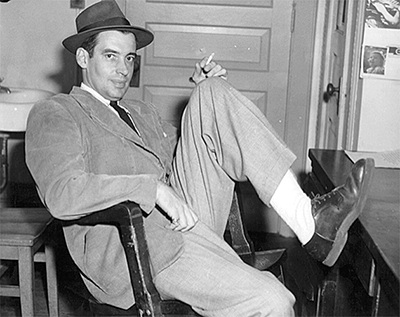
Ross Pelton Schlabach
Cranford never became dean. The job went to Ross Pelton Schlabach, a 34-year-old assistant professor at Pennsylvania State College who had worked for the Newport News Daily Press and Times-Herald and the Richmond News-Leader.
Schlabach, a 1939 graduate of Washington and Lee graduate, received a master of science degree in journalism from Columbia University.
His first actions were to install an AP teletype and to renovate room 203 of Legare College as a student lounge.
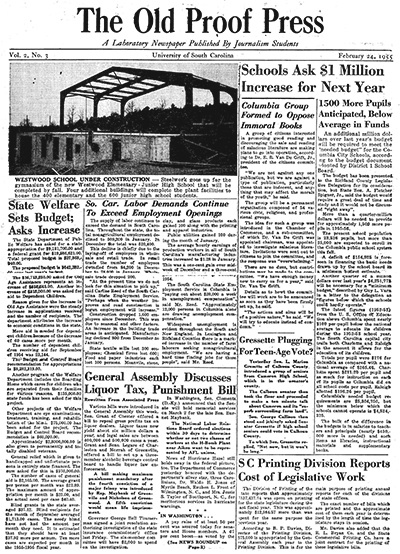
While Ross Pelton Schlabach was dean, students began publishing a practice newspaper that was named The Old Proof Press.
During Schlabach's tenure, students began publishing a “practice newspaper,” a four-page tabloid, on an old press the college bought for $500. The paper was first named “Old Proof Press” and later “The Legare Ledger.” Sixty-eight students were enrolled in the fall of 1951 when the school bought the proof press, which produced a press run of 30-to 40-copies of a four-page tabloid newspaper.
After Cranford and photography instructor Malcom Donald Coe left, they were replaced by H. Harrison Jenkins and John H. McGrail. Jenkins, who had bachelor’s and master’s degrees from USC, had worked for the Associated Press and the Charlotte News. He also had taught at the University of Florida and North Carolina State University before teaching at USC. He was associate editor of The Columbia Record. McGrail became the photography instructor.
Schlabach began the first internship program in 1952 when he sent students to the Charleston Evening Post. To promote good relations with the state’s editors, Schlabach traveled around the state at his own expense to meet them. Schlabach sought accreditation by the Accrediting Council on Education for Journalism and achieved it in 1954, though the inspection committee was very critical of the tattered state of Legare College.
By 1955, students were also interning at The (Charleston) News and Courier and The (Rock Hill) Herald.
When Schlabach resigned in 1955, he was replaced by George A. Buchanan, known to all his students as “Dean Buch.” Buchanan, editor and publisher of The Columbia Record, was a legend among state reporters.
Buchanan, who was born in 1898, worked part-time at The State while attending classes at USC. When Dean W.W. Ball left the university in 1927 to become editor of The (Charleston) News and Courier, he hired Buchanan as city editor. Buchanan returned to Columbia in 1931 as editor of The Columbia Record. Buchanan, who was editor and publisher of The Columbia Record in 1956 when he became dean of the School of Journalism, continued the dual roles for almost two years.
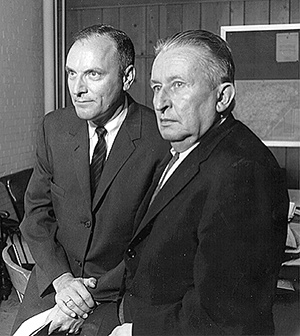
When George “Buch” Buchanan, right, retired in 1964, he was succeeded by Dr. Albert T. Scroggins, Jr.
The years between 1955 and 1965 were a period of major growth, primarily in curriculum and staff. The size and qualifications of the faculty increased, the basic curriculum was revised and expanded, a graduate program was initiated, and advertising and broadcasting sequences were created. Buchanan introduced courses such as “International Mass Communications,” “Advertising in Mass Communications” and “Radio and Television Newswriting.” In addition to basic newswriting and advertising, courses were offered in public relations, typography, copyreading and copydesk procedures, advanced copyreading, photography, public opinion and propaganda, newspaper business management, high school journalism and the literature of journalism. A complete program of graduate courses was offered for the first time in 1959, and the faculty featured another first : three professors with Ph.D.’s.
In addition to Assistant Professor Harrison Jenkins, who was editorial page editor of The Record, Buchanan hired Lloyd L. Huntington, who was managing editor of The State. By 1957, more than 200 students were enrolled in the School of Journalism. Buchanan hired Dr. William E. Winter as assistant professor; Dr. Nicholas P. Mitchell, former editor of The Greenville News, as a part-time associate professor; and Maurice R. Cullen, who held a master’s degree from Boston University. In addition to being dean, Buchanan became secretary-manager of the S.C. Press Association in 1959 after long-time Secretary-Manager Harold Booker Sr. died.
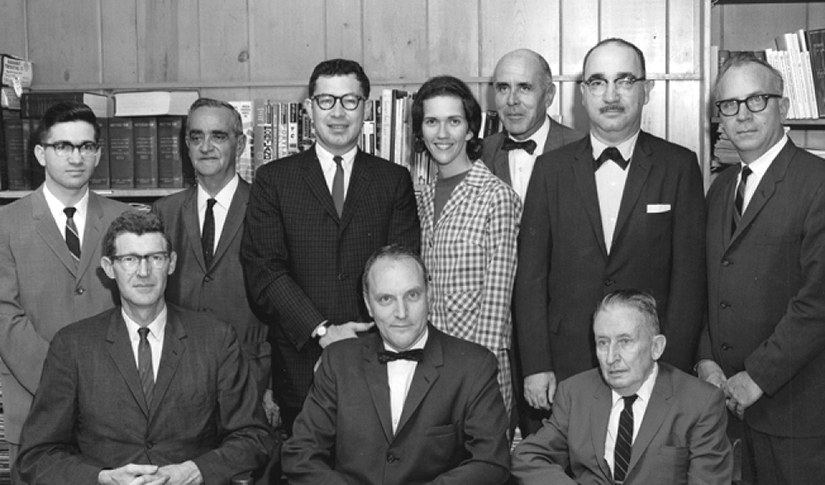
Dr. Albert Scroggins (seated, center) became dean of the School of Journalism in 1965. George Buchanan (seated, right) retired after 10 years as dean and nearly 50 years in journalism, and four years as secretary of the S.C. Press Association. The other faculty members in 1965 included (seated, left) Dr. Bill Winter, and (back row, left to right) William F. Watson, who was also city editor of The Columbia Record; visiting Professor George E. Simmons; Dr. George Crutchfield, Lee Skidmore (later Wenthe), Jack McGrail, Dr. Richard Uray, and Dr. Reid Montgomery, who taught press law and was secretary of the S.C. Press Association from 1965 to 1988.
The headquarters of the Press Association were moved to the School of Journalism in 1961, and in 1962 Associate Professor Earl A. McIntyre joined the faculty and replaced Buchanan as secretary-manager of the Press Association.
Buchanan, with his ever-present cigarette and rasping laugh, worked tirelessly as a fundraiser. Scholarships and awards for students tripled between 1955 and 1965. Buchanan revived and restructured the graduate program in 1962, and the School of Journalism divided its undergraduate courses into two sequences: news editorial and advertising. Radio and Television Newswriting, the first course directly related to the electronic media, was offered in the School of Journalism in 1962.
Magazine editor Ashley Halsey Jr. and Record news editor Robert F. Morrell joined the faculty, and the associate dean of Tulane University, George E. Simmons, was a visiting professor for two years. The school had 225 students and an annual budget of $65,000 by 1964. After ten years as dean and 50 years in journalism, Buchanan retired at the end of the 1964-65 school year, although he continued to teach classes for two more years. The year Buchanan retired, 232 students were enrolled in journalism classes.
Buchanan was succeeded by Dr. Albert T. Scroggins Jr., chairman of the journalism program at the University of South Florida. A Navy veteran of World War II, Scroggins earned bachelors degrees at Auburn and Missouri, a master’s degree in English from Missouri in 1949 and his Ph.D. from Missouri in 1961. He taught at Missouri, Mississippi College, Howard College and Southern Illinois University and was chairman of the journalism program at the University of South Florida when he became professor and dean of the School of Journalism at USC.
Scroggins immediately began building on the foundation established by his predecessors. Shortly after his arrival, he laid out a ten-year growth plan that included moving the college into the proposed Memorial Hall Coliseum to be built in 1969.

Dr. Reid H. Montgomery, who had worked at The State and the Sumter Daily Item, and who had taught journalism at Winthrop College and Florida State University, joined the faculty in 1965. A graduate of Wofford, Carolina and New York University, he succeeded McIntyre as secretary-manager of the South Carolina Press Association and served in that position until 1988. The fourth secretary- manager of the Press Association, he also taught media law and became the voice of freedom of information in South Carolina.
George T. Crutchfield became secretary of the South Carolina Scholastic Press Association. The school began offering an advertising/public relations major in 1962 and a broadcast sequence in 1966 at the urging of the South Carolina Broadcasters Association.
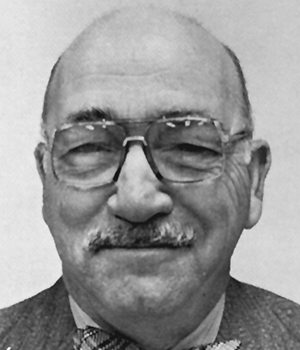
The broadcasters agreed to hire the new broadcasting professor as the executive director. Richard M. Uray joined the staff in 1966 from Southern Illinois University and began to develop the electronic journalism program. He was chairman of the broadcasting sequence and professor at USC. He retired in 1996 after 30 years in both jobs.
Dr. Lee Dudek joined the broadcasting faculty in 1967, and Dr. Perry J. Ashley joined the faculty in 1968 as secretary of the S. C. Scholastic Press Association. Dr. Ashley was best known for his History of Journalism course. Ashley earned his B.A. and M.A. degrees from the University of Kentucky and his Ph.D. from Southern Illinois and had taught at both institutions. Leila (Lee) Skidmore (later Wenthe), who had an M.A. from USC and was a former copy writer for an advertising agency, was the first female instructor in the college.
William F. Watson, city editor of the Columbia Record, taught laboratory courses in reporting and editing. J. James McElveen, former instructor at Columbia College, joined the staff in 1968. In 1969, the Scholastic Press Association changed its constitution to form two main divisions: yearbook and newspaper. McElveen directed the newspaper section, and Ashley directed the yearbook division.

Dr. Henry Price joined the faculty in 1969 as the first chairman of the news-editorial sequence. He, became associate dean in 1977 and was best known for his tough copyediting courses.
A second graduate degree, Master of Mass Communication, was added alongside the previous Master of Arts in Journalism.
After years of crowding an ever-expanding number of students into Nineteenth Century space, in January 1969 the college moved into 40,000 square feet of the newly designated Carolina Coliseum.
The School of Journalism finally had a facility it could be proud of, “one of the finest...in the whole Southeast,” in Scroggins’ words.
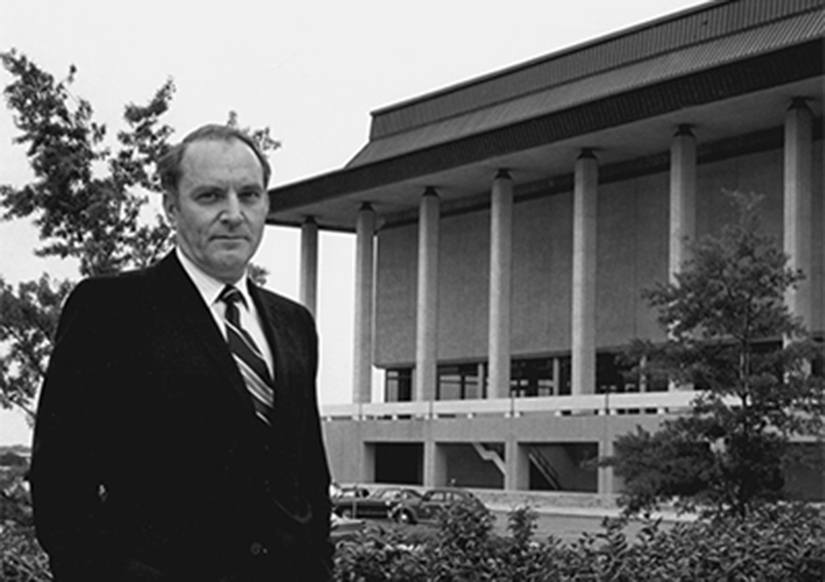

The first edition of the Carolina Reporter was published in 1971 under the direction of Dr. Henry Price.
Among the new classrooms in the Coliseum was a laboratory for producing a weekly newspaper, The Carolina Reporter, which was designed to provide a real-life working experience for seniors bound for print journalism careers. The newspaper was established in 1971 by Price. Besides enhancing reporting skills, the newspaper gives students an opportunity to edit, lay out and design pages, write headlines, and produce graphics using QuarkX-Press and Photoshop computer programs.
The School of Journalism became the College of Journalism in 1971. Patricia G. “Pat” McNeely, who had been a reporter for The Greenville News, The State and The Columbia Record, joined the faculty in 1972. She was chairman of the news-editorial sequence from 1977 to 2006, except for three years when she was associate dean.
During Scroggins’ tenure, he added four nationally known professors to the faculty.

Joseph A. Nolan, who had been in corporate public relations with the Chase Manhattan Bank in New York, taught public relations. He was so popular among the public relations students that the student PR chapter was named in his honor.
William A. “Bill” Emerson, who was the last editor of the old Saturday Evening Post, brought his booming personality to the college, where he established a magazine track. He served on the board of directors of Playboy magazine and was sought after for his gifted and entertaining speeches. He moved to Atlanta after he retired.
Emerson was succeeded by Don McKinney, who had been managing editor of McCall’s Magazine for 17 years.
Mark Ethridge Jr., a member of a three-generation Pulitzer Prize family, left the newspaper business in Akron to teach reporting, media law and advanced copyediting at USC. He owned The Lexington Dispatch for several years before he died.
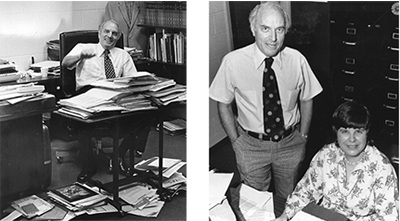
By 1984, the college had 1,100 students, 28 full-time faculty, more than a dozen adjunct instructors and a budget of $1.4 million.
When Scroggins retired the following year, he had been dean to 90 percent of the college’s more than 3,000 journalism and mass communications graduates.
His tenure of more than twenty years was longer than any other journalism dean in the country at that time. Dean Al Scroggins and Pat Crosby, who had been the dean’s administrative assistant for 20 years, both retired in 1985.
The journalism school had reached its all-time high enrollment of 1,100 students.
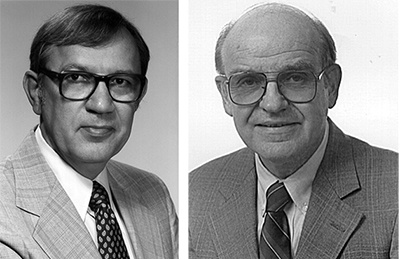
Dr. Perry J. Ashley was acting dean until 1988 when Joe Shoquist, retired managing editor of The Milwaukee Journal, became dean.
To reflect a broadening field of study, the school’s name became College of Journalism and Mass Communications.
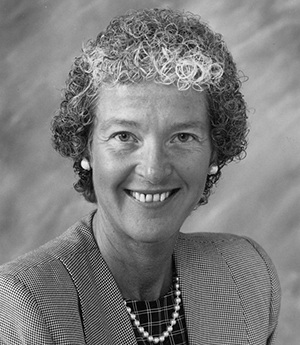
Turk earned her doctorate at Syracuse University, then held administrative positions at Oklahoma State and Kent State before coming to USC.
Under Turk’s direction, a broadcast “senior semester” was started in 1993, allowing electronic broadcast majors to produce and direct their own TV newscasts.
A Ph.D. program began in 1994 and expanded to 15 candidates within three years.
The Carolina Reporter began an on-line edition, displaying news copy, photos and informational graphics on the Internet.
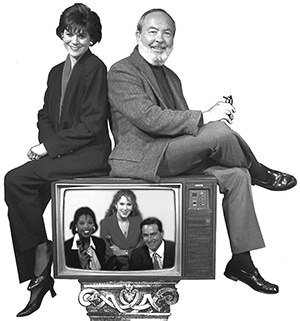
By 1996, enrollment in the college had gone back up to about 1,000, including 125 master’s degree candidates.
August “Augie” Grant joined the faculty to establish the Center for Mass Communications Research in October 1997. The inaugural conference was devoted to the cutting-edge theory of framing communications issues.
In 1999, Dean Turk took a leave of absence to become the founding dean of the College of Communication and Media Sciences at Zayed University in the United Arab Emirates.
She held that position for 21⁄2 years but did not return to USC.
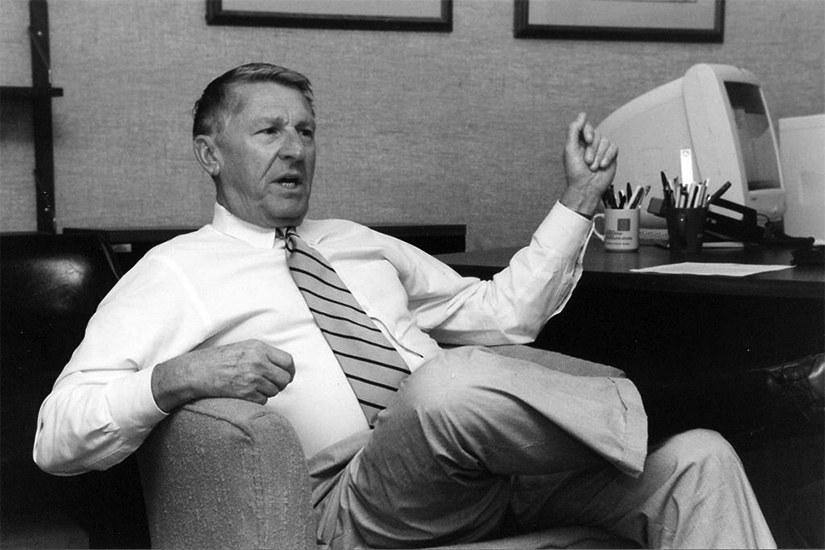
Dr. Ron Farrar was named interim dean of the College of Journalism and Mass Communications in 1999 and held the position for two years before retiring in 2001. A search for a new dean was launched but not successfully completed before Farrar’s retirement. Dr. Henry Price became interim dean of the college in 2001 and served until July of 2002, when he retired.
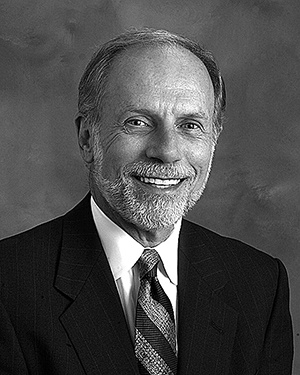
The merger took effect July 1, 2002, when Bierbauer became dean and Dr. Andrew Sorenson became the 27th president of the University of South Carolina.
The newly constituted academic unit would be called the College of Mass Communications and Information Studies. Both disciplines were in the throes of adapting to the digital revolution. It was, Bierbauer said, more an “arranged marriage, than a shot- gun marriage,” but it was not an easy one. The schools were on opposite ends of campus — the Coliseum and Davis College — and, culturally, even farther apart. The
School of Journalism and Mass Communications (SJMC) offered the gamut of degrees—BA, MMC, MA and PhD—but was substantially an undergraduate program. The School of Library and Information Science (SLIS) was only a graduate program. At the time, the library and information science program, initiated in 1972, was a stand- alone college offering the professional master’s degree and graduate certificates although doctoral and undergraduate degree pro- grams were developed after the merger.
The SLIS faculty loved their classic, nearly century-old building near the center of campus. The SJMC faculty had endured the promise of escaping the crowded, dim, windowless quarters of the Coliseum through three previous deans.
A growth spurt in enrollment at the turn of the millennium and the university’s bicentennial had pushed SJMC undergraduate enrollment from about 1,000 students to nearly 1,500. The school raised its undergraduate retention threshold to a 2.5 GPA as both a qualitative and quantitative control, resulting in slightly fewer, but better students.
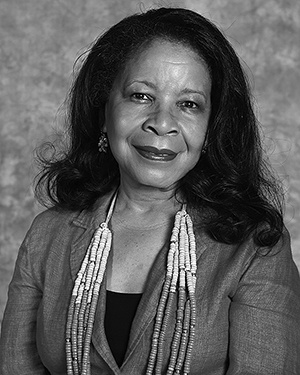
With the merger, Dr. Erik Collins became interim director of the School of Journalism and Mass Communications until Dr. Shirley Staples Carter became director in 2003. Dr. Carter previously served as director of the Elliott School of Communication at Wichita State University and in 2006 was the recipient of the Journalism Administrator of the Year award from the Scripps Howard Foundation.
The 1969 move from Legare to the Coliseum created more space but took the program away from the center of campus, and the luxury of space did not last long. Dean Scroggins began investigating a new location, but so did Deans Shoquist, Turk and Bierbauer. Sumwalt, Petigru and the prime real estate at the corner of Pickens and Pendleton streets now occupied by the National Advocacy Center, as well as LeConte were possibilities until 2007 when the Health Sciences building at the corner of Sumter and Greene streets went on the drawing board of The Boudreaux Group, a Columbia architectural firm.
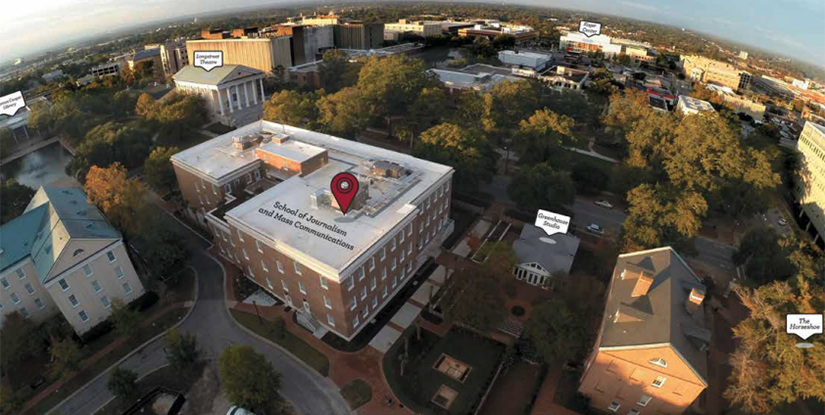
The Arnold School of Public Health moved out in 2013, and Palmetto Construction Group co tractors started building the new journalism school in January 2014 and finished in June 2015. The university provided $18 million toward the project, and the college raised approximately $7 million more.
Dr. Carol Pardun succeeded Dr. Carter in 2008, but stepped down in 2014 when Dr. Tom Weir was named interim director. He retired in 2015 because of illness. Dr. Andrea Tanner was named interim director and, following a national search, became director of the school.
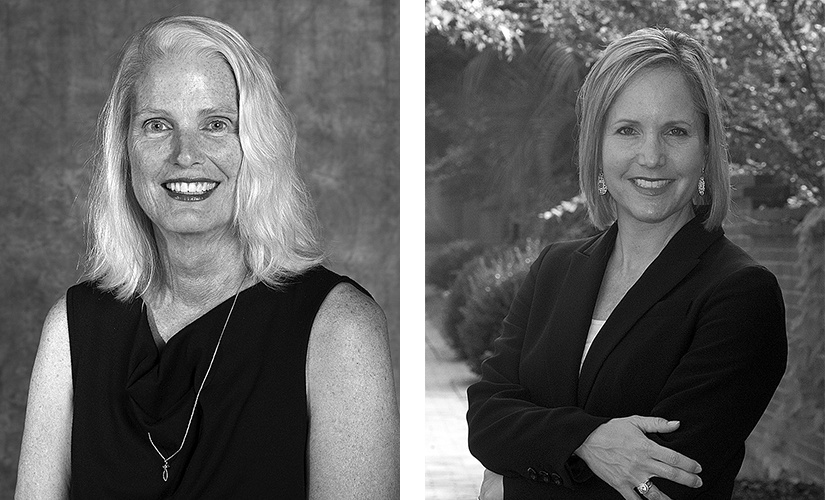
Dr. Tanner oversaw the building move during the summer of 2015, when faculty and staff moved out of a less than 30,000 square-foot space mostly below ground in the Coliseum into nearly 55,000 square feet of space on three multi-windowed floors of the school’s new home. There was also a roof terrace, a student plaza, a two-story atrium and the neighboring Kennedy Greenhouse Studio, a ramshackle greenhouse adjacent to the Health Sciences building that was converted to a glass-framed television studio.
Journalism alumnus Lou Kennedy and her husband Bill, a USC pharmacy alumnus, provided $1.5 million to build and outfit the greenhouse studio. Historic Columbia honored The Boudreaux Group’s design for “New Construction in a Historic Setting” in 2017, and the new journalism building was also accorded LEED Gold certification as an environmentally friendly structure.
The journalism (print) major was redefined as “multimedia” that included “print” in 2012, and the multimedia and broadcast senior semesters officially merged in 2015, when they moved to the new journalism building. What started as a simple newspaper capstone class in 1971 and a broadcast capstone class in 1993 has grown to a class of multimedia and broadcast journalism students who produce The Carolina News, a daily, live television newscast as well, as the online Carolina News & Reporter.
The class produces The Carolina News and Reporter, which includes two daily live news television shows (The Carolina News) and a print and online newspaper publication (The Carolina Reporter). This new multimedia media company approach also provides content (stories, photographs and informational graphics) to the S.C. Press Association for distribution to all the newspapers in South Carolina. The class is also working on plans to distribute the video news packages to the S.C. broadcasters.
The simple one-room newsroom has evolved into two newsrooms with 40 to 50 journalists, a state-of-the art broadcast studio and a high-tech control room. The students also produce live remote broadcasts from their newsroom and from the Kennedy Greenhouse studio adjacent to the journalism school.
The new converged newsroom gives the students majoring in multimedia (print) journalism the ability to become comfortable with video and television production while broadcasting students create informational graphics and write longer and more complex stories for the web and print.
Enrollment rose to a record of more than 1,600 students in the fall of 2017, and Bierbauer stepped down after 15 years as dean to return to the faculty.
Dr. Tom Reichert, formerly head of the advertising and public relations department in the Grady College of Journalism and Mass Communication at the University of Georgia, became dean effective Aug. 1, 2017.
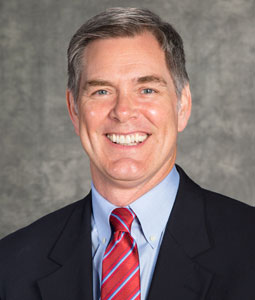
Dean Reichert brought new ideas and new energy to the college.
Under his leadership, course offerings expanded in high-interest areas like sports journalism and social media, new initiatives like the Social Media Insights Lab were undertaken and talented new faculty were brought in.
Society was changing, the media world was changing and so too was the school.
Associate Professor Dr. Kevin Hull once worked as a television sportscaster before getting his Ph.D. at the University of Florida and then joining the USC faculty.
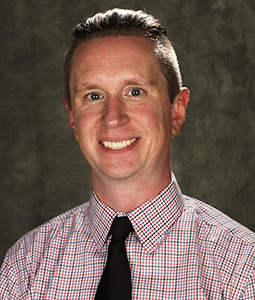
Hull developed a single course on sports media that blossomed into a concentration, then a minor and now an undergraduate major scheduled to enroll students in the fall of 2024.
The impact of social media on society has been profound. In response, the school expanded its course offerings and created a social media minor, something highly relevant to students in other academic units. The minor is being done in partnership with the School of Information Science or iSchool, the new identity for what once was the School of Library and Information Science.
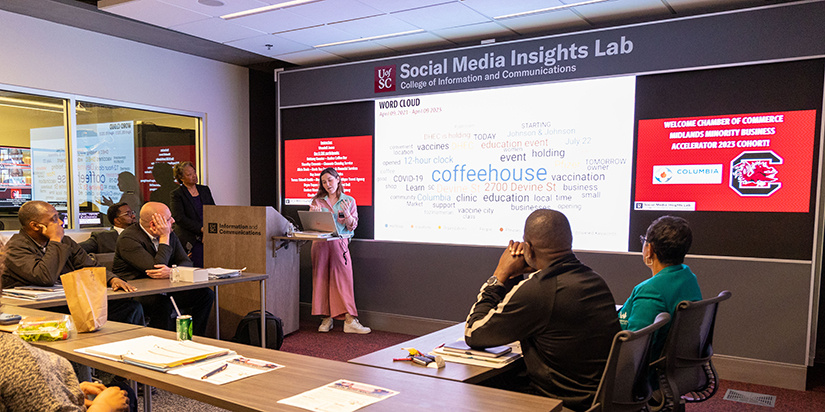
In 2019, the Social Media Insights Lab opened and under the leadership of Randy Covington, the college’s Director of Special Projects, it quickly became one of the premiere academic analytics labs in the country. The Insights Lab utilizes powerful software driven by artificial intelligence to analyze massive amounts of online data. The lab is used for teaching and academic research. It also has commercial clients, generating revenue for the college, and it periodically publishes public reports on high-interest topics.
Also in 2019, a Biometric and User Experience Lab was created to assess psychometric responses to content and immersive environments. Advertising Associate Professor Dr. Taylor Wen is the lab’s first director and Jason Porter, an instructor in the visual communications sequence, oversees augmented reality activities.
The school undertook two successful cluster-hire initiatives, one in 2019 that focused on data and new technology. That effort resulted in the hiring of three highly talented faculty members. A second cluster hire in 2020 within the area of race and media added three additional talented faculty members. These hires have further bolstered the research and instructional depth of the school.
The school has also had success with its chaired faculty positions. Alumnus Ken Baldwin’s desire to build expertise in business communication was strengthened with the hiring of Michelle LaRoche, a former Dow Jones editor, as the first Baldwin Chair in Business and Financial Journalism. She developed curriculum and fostered student interest in this area.
More recently, UNESCO awarded the college a prestigious chair in the area of data, media and society to foster the study of mis- and disinformation. The school has enhanced its UNESCO relationship by hosting two collaborative, international summits on campus, one in 2021 and another in 2023. The chair will work closely with UNESCO to produce annual reports and convene global summits, thus continuing to build the school’s international reputation.
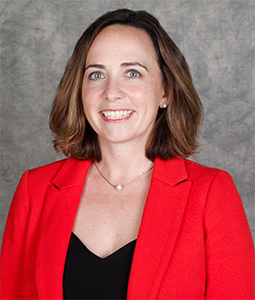
During Reichert’s tenure, leadership of the school passed from Andrea Tanner to Dr. Andrea Hickerson, who came from the Rochester institute of Technology where she was Director of the School of Communication.
Hickerson helped guide the school through the difficult period of COVID-19 and the necessary transition to online learning.
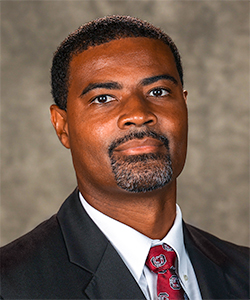
When Hickerson left to become the journalism dean at the University of Mississippi, the school brought in Dr. Damion Waymer from the University of Alabama, where he was the Senior Associate Dean of the College of Communication and Information Sciences. A native of Orangeburg, Waymer previously was an Associate Provost at the University of Cincinnati and a department chair at North Carolina A&T State University.
One of Reichert’s priorities has been bringing the journalism school and the iSchool closer together. A key step involved strengthening the college’s infrastructure to better support both schools by creating three new associate dean positions at the college level.
In 2018, Dr. Shirley Staples Carter was named the first Associate Dean for Diversity, Equity and Inclusion. In that role, she spearheaded burgeoning relationships between the school and South Carolina’s HBCUs that have resulted in trainings, summer workshops for underrepresented students, and an academic pipeline partnership with Claflin University.
Dr. Kim Thompson, a professor on the iSchool faculty, serves as the Associate Dean for Academic Affairs. Thompson is an expert on information access and social inclusion.
Dr. Linwan Wu, an associate professor of advertising, is the Associate Dean for Research. In this role, he supports both the Social Media Insights Lab and the Biometric and User Experience Lab,
In response to the dean’s mandate, the two schools have found meaningful ways to work together. In addition to the joint social media minor, there is a new, online master of science degree in data analytics and strategic communication—with each school providing half the coursework. Also, the two schools cross-list a news literacy class open to students across the university.
Undergraduate enrollment continues to be strong. It reached an all-time high in 2020 with more than 1750 students across the school’s six majors. In addition to strong enrollment, the college has continued to lead the university in advising and student success. For example, both four-year graduation and second-year retention metrics are the best among any college at USC.
There are several explanations for this success, starting with a strong, student-focused faculty and including the fact the school is keeping pace with our digital, interconnected world. The college made a significant investment to provide Adobe Creative Cloud at no cost to every student, better preparing them for academic and professional success.
Since 2018 — though interrupted by COVID — the college has sent both students and faculty to the South By Southwest Festival in Austin, Tx. More commonly known as SXSW, the festival celebrates the convergence of tech, film, music, education and culture.
The school increasingly has an international focus, largely through popular “Maymester” courses to places as diverse as Spain, Germany, Italy, Malawi, Oman and Cuba. In 2023, more than 100 students studied abroad. Thanks to the generosity of Mary Caldwell, a former public relations faculty member, an endowed fund provides scholarships to needy students, many who have never been overseas and some who had never been outside the state of South Carolina.
At the graduate level, a new online version of the MMC — the Master of Mass Communications — was introduced in Spring 2021, with enrollment quickly rivaling that of the face-to-face MMC degree.
The graduate program has added two academic partnerships. In 2019, the school signed a dual degree agreement with National Ching Chi University in Taiwan. Students can begin in either Columbia or Taipei and earn two master’s degrees by completing the second year at the other institution. In 2020, the college initiated an accelerated master’s degree program with nationally ranked HBCU Claflin University. Qualified Claflin seniors can earn up to 12 graduate credits that they can transfer toward either the MMC degree or MLIS degree offered by the School of Information Science.
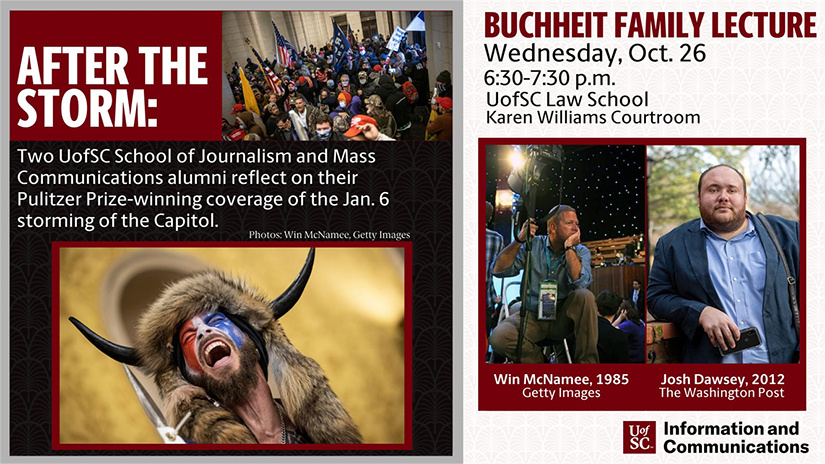
Perhaps there is no greater testament to the strength of an academic program than the success of its graduates and j-school alums are doing very well. In 2022, Josh Dawsey (Class of 2012) of The Washington Post and Win McNamee (Class of 1985) of Getty Image won Pulitzer Prizes for their teams’ coverage of the Jan. 6 attack on the U.S. Capitol. Both visited campus in January 2023, to share a moving account of that day to a packed auditorium as part of the school’s annual Buchheit Lecture.
As the school’s first century comes to a close, there is much to celebrate as we look back and much to anticipate as we look to the future with strong faculty, innovative classes and great students.